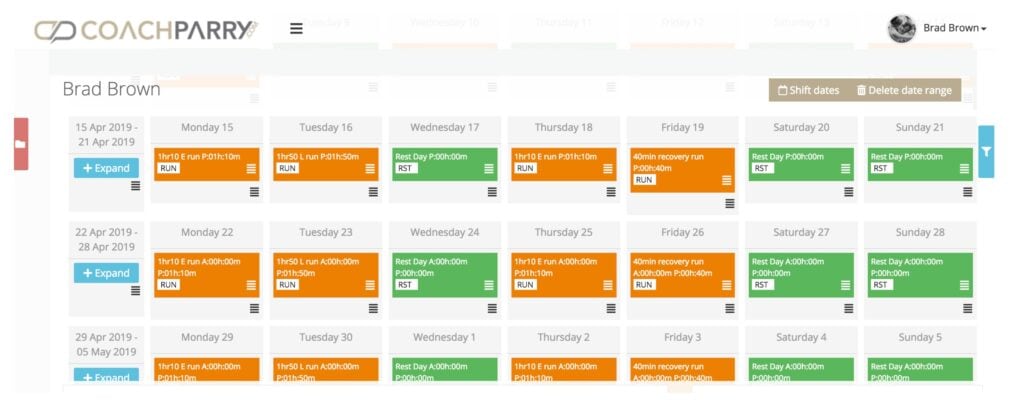Most of us don’t have a very good feel for when we need a break from running…
We can’t really tell when enough is enough…
…and by the time we figure out we’ve done too much, it’s too late.
Following a structured training programme takes the guesswork out of your running. And if done in conjunction with the guidance of a qualified coach, will teach you how to train responsibly and get the most out of your body.
The first of the 6 little known benefits to following a structured training programme is not knowing when to run, but more importantly, knowing when to rest…

1. Rest
A structured training programme should have built in rest days and cycles to allow you to recover from your training and get you ready for your next sessions.
The rest and recovery cycles are crucial to maintaining running health and remaining injury-free.
Pro Tip: Rest days are important and they should be viewed as part of training.
While there is room on rest days to add in strength training, cross-training or extra running, be sure that any additions will contribute to your overall programme by discussing this with one of our coaches.
You should have a minimum of 1 full rest day per 7-day cycle

2. Spacing
Structured training programmes place workouts in the week when you are most likely to have time to do them and will, therefore, have the best chance of successfully completing them.
For example, you wouldn’t place an interval session the day after your longest run…
…or perhaps you have a job that requires you to work on weekends.
You wouldn’t want your long runs on a Saturday and Sunday (when most people can run their long runs) but rather midweek when your schedule better allows for it.

3. Pacing
Most amateur athletes are making this mistake…
…They are running their easy runs too hard and not running their hard runs hard enough.
A good, structured training programme should provide guidance on the correct pacing so that you can get the best results out of each session.
The pacing guidelines will ensure that you run easy enough on easy, long and hard days.

Pro Tip: If you want to run faster, you need to slow down:
4. Appropriate Loading
A structured training programme should be a systematic, layered build-up over time.
Layering new training loads on top of successfully achieved training loads that start at an appropriate level based on current ability, experience and fitness…
…It is this progressive loading that leads to improved fitness and ensuring each step is built on a solid step before it, reduces the risk of injury.
Doing too much too soon is a surefire way to cause your body to break down.

5. Acts as a conscience
Structured programming can also act as a training partner, getting you out of bed on those cold dark mornings, knowing you will have a red block if you don’t get up and get going.
This must come with a warning that 1-2 days missed on a programme, will not determine its success.
If you are very tired, sick or sore, a day of unscheduled rest may ensure the success of the programme.
Pro Tip: If you miss a session or two, do not try and play ‘catch up’. The added load of trying to catch sessions up increases your risk of injury.

6. Brings Enjoyment to Running
Many runners think that structure will make a training programme boring and uninteresting, but the reality is in fact different…
Following a structured training programme brings peace of mind, gradual but steady improvement and in so doing, many fun miles on the road.



Comments are closed.